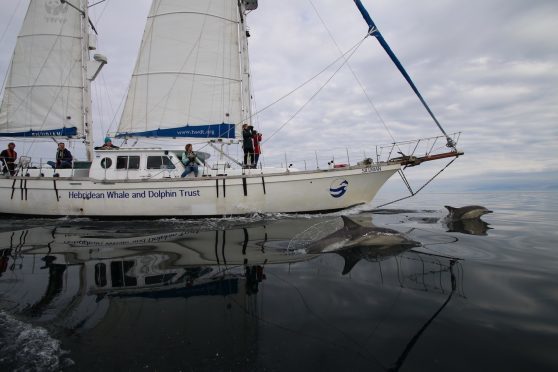Explosions and sonar pulses used in one of Europe’s largest war games could be having a serious impact on the welfare of whales and dolphins in Scottish waters.
Scientists from the Hebridean Whale and Dolphin Trust (HWDT) set sail yesterday to investigate the impact of the Joint Warrior exercise on marine mammals.
The two-week military exercise, which takes place twice a year, and usually off the coast of north-west Scotland, can involve up to 13,000 personnel from all three British armed forces, NATO and other allied countries.
A typical exercise can involve up to 50 naval vessels and 75 aircraft.
However, researchers have raised fears that the technology employed during the war games can have adverse effects on the marine creatures.
The HWDT crew will use hydrophones and other equipment to track military sonar and other underwater noises produced during the games, as it is feared they can interfere with the sensory organs of whales and dolphins – and potentially lead to mass strandings.
A spokesman for the organisation said: “The crew will be joined aboard by a team of citizen scientists from the UK and USA to conduct visual and acoustic surveys – and the data collected will be used to determine any effects on the behaviour and occurrence of marine megafauna during the bi-annual exercise.
“Military sonar used during the exercises emits intense noise that can disturb and harm whales and dolphins, because they rely on sound for navigation, foraging and communication.
“Naval sonar, more commonly linked to mass stranding events of deep diving whales, has also been associated with minke whale strandings in the Bahamas and North Carolina.
“During previous surveys, which have coincided with Joint Warrior exercises, HWDT has observed minke whales moving at high speed and leaping clear out of the water, at the same time as military sonar was detected on the hydrophone.
“This behaviour is unusual here, and is rarely seen in undisturbed whales.
“The long-term impact of such disturbances or exposure to sonar is largely unknown.”
The HWDT has asked the public to tell them about any unusual dolphin or whale behaviour to assist in the study.
For more information or to make a report, visit www.whaledolphintrust.co.uk
